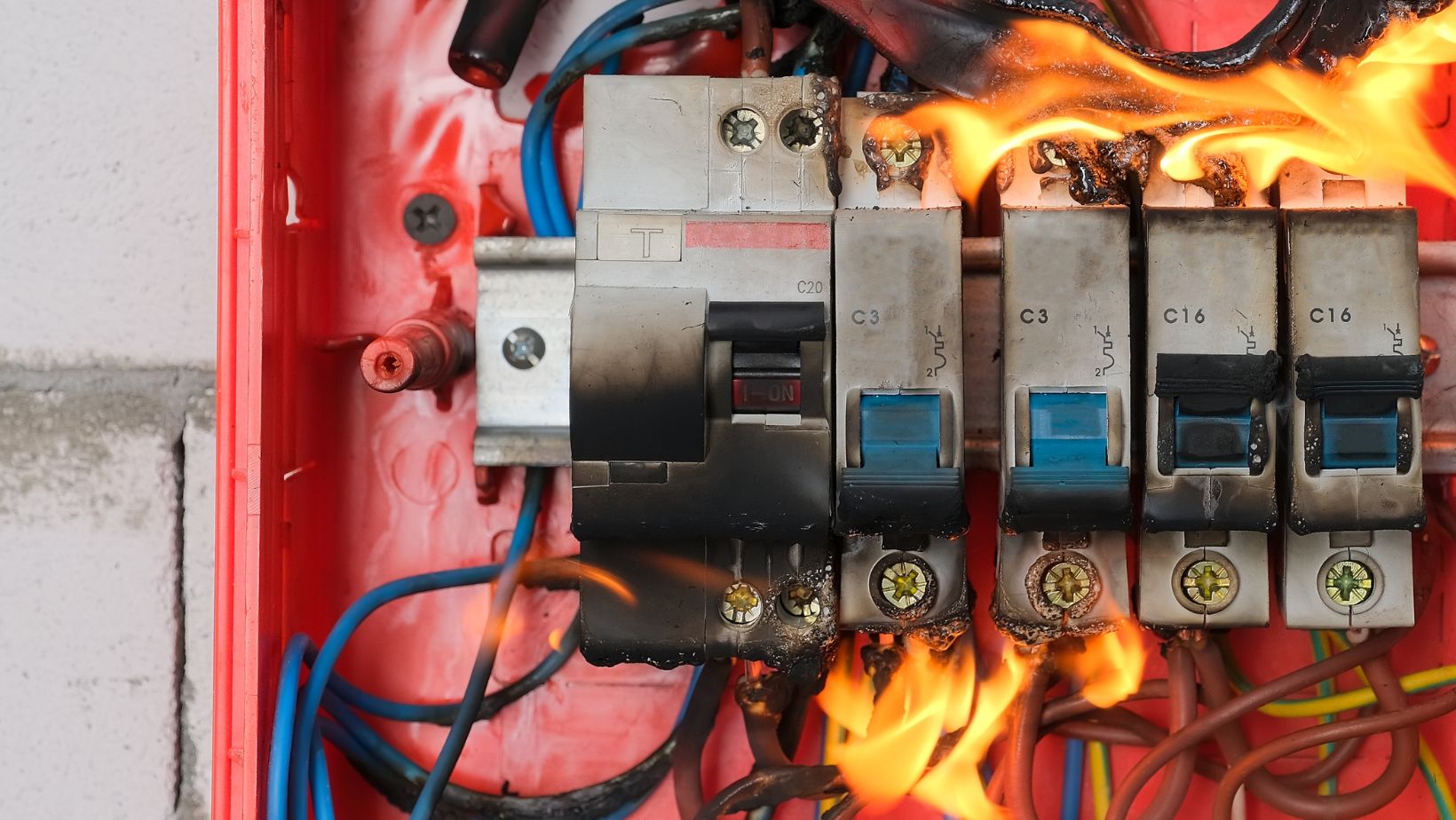
Many homes today use more electricity than they were initially built to handle. We will explore how electricians play a vital role in identifying and resolving overloaded circuits, reducing the risk of electrical fires. The electrical system bears a heavier load as more devices are added to daily life—everything from large appliances to smart gadgets. If too many devices draw power from one circuit, the wires can overheat, increasing the potential for sparks, melted insulation, and fire. Circuit breakers are meant to prevent these problems by shutting off power during overloads, but repeated tripping is a clear sign of a deeper issue. Unfortunately, homeowners often overlook these warning signs, not realizing the danger they’re facing. Addressing overloaded circuits is not just about stopping the breaker from tripping—it’s about preventing long-term damage to your electrical system and ensuring your home remains safe. An electrician’s work involves more than simple fixes; it requires assessing the entire system for risks and applying the right solutions.
The Risks of Circuit Overload in Modern Homes
Identifying the Source of the Overload
When a breaker constantly trips, it’s easy to assume the problem lies with the appliance in use or the breaker itself. However, the issue is often more complex. Electricians begin by identifying the source of the overload through careful assessment. They test each circuit, examine connected devices, and measure current flow to see if the demand exceeds the safe capacity of the wiring. Often, older homes are wired for far fewer amps than modern devices require. A kitchen might have only one circuit powering multiple high-wattage appliances, which causes overload when several are used simultaneously.

The electrician maps out which outlets and fixtures are linked to each breaker, which allows them to spot patterns and problematic groupings. Once the source is pinpointed, the electrician can develop a plan to redistribute loads, add new circuits, or upgrade the wiring. It’s a process that restores normal function and lays the groundwork for safer, more sustainable power usage across the home.
Upgrading Circuits and Panels to Meet Current Needs
Once the overloaded areas have been identified, the electrician may recommend upgrading the affected circuits. This process often involves installing additional circuits to distribute power evenly across the home. In cases where the panel itself is outdated or maxed out, a new breaker panel might be needed. These upgrades ensure that each home area has a dedicated power source, reducing strain and significantly lowering the fire risk. Adding circuits isn’t just about convenience—it directly impacts safety. High-demand areas like kitchens, laundry rooms, and home offices benefit from dedicated circuits that prevent overuse on a single line. Electricians may also install higher-gauge wiring in certain areas, which can safely carry more current without overheating. These changes make a real difference, especially in homes built before modern electronics and HVAC systems became common. Without the right electrical infrastructure, even routine use of multiple devices can push a system past its limits and create hazardous conditions.
Replacing Faulty or Outdated Components
In addition to upgrading circuits, electricians check for outdated or damaged components that may contribute to circuit overloads. This includes worn-out outlets, frayed wires, loose connections, and old breakers that may not trip as they should. An old breaker that fails to cut off power during an overload can allow wiring to overheat and potentially catch fire. Replacing these parts is vital to making the entire system safer and more reliable. Electricians also ensure that connections inside the panel are tight and secure, as loose wiring can spark and cause arcing. Some may recommend installing arc fault circuit interrupters (AFCIs), which shut off power when they detect arcing—an early warning sign of electrical failure. Special connectors may be used to reduce fire risks where copper and aluminum interact in homes with aluminum wiring. Technicians performing electrical repair services in Vancouver are familiar with these safety improvements and often include them in comprehensive circuit evaluations and upgrades.
Educating Homeowners on Safe Power Usage
Beyond making technical repairs, electricians play an essential role in educating homeowners about safe power use. Many circuit overloads stem from unintentional misuse—plugging multiple high-wattage appliances into the same outlet, daisy-chaining power strips, or leaving devices running unnecessarily. Once repairs are complete, the electrician may recommend new usage patterns, such as moving specific devices to less-used outlets or spreading out appliance use during peak times. This advice helps prevent future overloads and empowers homeowners to take control of their energy habits. Electricians may also recommend adding more outlets to reduce the need for extension cords or installing surge protectors in areas where electronics are heavily used. Education combined with physical upgrades gives families peace of mind. They walk away with a safer home and a better understanding of how to maintain that safety over time. As homes become more technology-driven, these conversations become essential to long-term fire prevention and electrical health.

Fixing an overloaded circuit is much more than flipping a breaker back on. It’s a comprehensive process that requires evaluating the system, addressing its weak points, and ensuring it meets today’s power demands. Electricians assess current load, perform repairs, and guide homeowners on proper usage—steps that together reduce fire risks and restore confidence in the home’s safety. With careful planning and effective upgrades, even older electrical systems can be brought up to modern safety standards. As homes adopt more devices, appliances, and smart technologies, the circuit demand will only increase. This makes regular inspections and timely upgrades even more critical. Preventing fires and ensuring safe, reliable power starts with understanding how electricity moves through the home and where improvements can be made. In that process, the role of a trained electrician becomes a safeguard, providing the knowledge and labor needed to turn overloaded systems into secure, efficient, and worry-free environments.